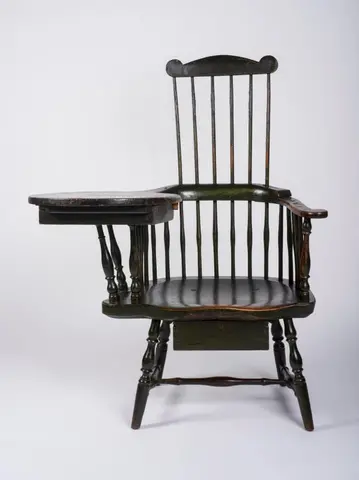Becoming America: Thinking through Identity, Culture, and Traditions in Early America
Prosperity for All?
A Seat at the Table
In the earliest days of the American colonies, it was common for a household to own only one chair, and use of the chair was reserved for the man of the house while women and children would sit on stools and benches or on the floor. Children even ate their meals standing up at the table. With the advent of an easily accessible and affordable chair, more people found themselves with a literal “seat at the table.”
America pioneered the idea that every person deserves to have access to a piece of the “good life,” regardless of their wealth or status. From early in the development of our country, people who were able to afford and purchase goods and services frequently had options on what they might buy. Some materials were far too expensive, and some designs were exclusive to those who could afford them.
The Industrial Revolution and era of mass production changed society in many ways. One of the outcomes was that everyone could afford goods that were previously only accessible to the rich. It’s basically the consumer version of democracy, and it has become an important part of our everyday experiences even now. Today, most of us have a cell phone, we have access to cheap clothing, and keeping food in the cupboard is more affordable. What’s more, we often have many choices about what we want to buy. This kind of luxury for regular people would have been unthinkable even a hundred years ago.
Do people believe that owning material goods makes them feel more equal to others? Happier?

Object Story: High-back Windsor Armchair with Writing Arm
A popular and well-known style of chair in early American life.

Activity: Are Sneakers the Windsor Chairs of the Shoe World?
Consider how specialized goods become more affordable for all.